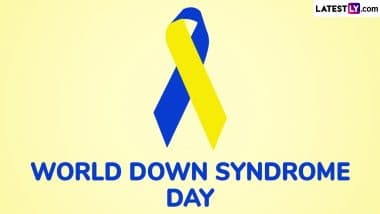Washington D.C. [USA], May 30 (ANI): Scientific studies suggest that children with birth defects are at increased risk of cancer. However, it has not been assessed whether the type of cancer, the age at which they are diagnosed or the extent of cancer spread at the time of diagnosis, is different for children with birth defects compared to children without birth defects.
In this study led by Baylor College of Medicine and Texas Children's Hospital, researchers compared about 13,000 children with cancer but no birth defects with nearly 1,600 children with cancer and one or more birth defects. The results were published in the journal Cancer.
"We investigated 28 different types of cancer by analyzing data from population-based registries in four U.S. states. For eight cancer types, we saw differences in the frequencies of those cancers when comparing children with birth defects and children without," said first author Dr Jeremy Schraw, instructor of pediatric oncology and part of the Center for Epidemiology and Population Health at Baylor.
The group of children with birth defects in this study did not include those with syndromes caused by chromosomal or single-gene alterations, such as Down syndrome or neurofibromatosis, whose increased cancer risk has been previously studied.
Also Read | Poor Ventilation at Homes and offices May Increase Coronavirus Spread: Study.
The researchers found that acute lymphoblastic leukaemia (ALL), the most common childhood cancer in the general pediatric population (24.5 per cent), constituted a smaller proportion of diagnoses (12.4 per cent) in children with birth defects. On the other hand, among children with birth defects, larger proportions of tumours were of embryonic origin, including neuroblastoma (12.5 per cent vs. 8.2 per cent) and hepatoblastoma (5 per cent vs. 1.3 per cent).
Regarding the age of diagnosis, the researchers found that the majority of these cancers were diagnosed 1 to 2 years earlier in children with birth defects than in children without.
Schraw and his colleagues also looked at the stage of cancer at diagnosis to address the possibility that cancers were diagnosed earlier in children with birth defects a result of the children getting more medical attention due to their condition, and during checkups, cancer was found incidentally. If this were the case, the researchers expected that cancers in children with birth defects would more often be at an earlier stage at diagnosis than cancers in the general pediatric population.
"When we looked at the cancer stage at diagnosis, we found that, for the most part, there was no trend toward the earlier stage at diagnosis in children with birth defects," said Schraw, who also is a member of Baylor's Dan L Duncan Comprehensive Cancer Center. "This suggests that increased medical surveillance alone does not explain the earlier age at diagnosis in children with birth defects."
"We hope that this research can inform future studies that will help us better understand cancer risk in children with birth defects," said corresponding author Dr Philip Lupo, associate professor of pediatric haematology and oncology and member of the Dan L Duncan Comprehensive Cancer Center at Baylor. He also is the director of the Childhood Cancer Epidemiology and Prevention Program at Texas Children's Hospital. "However, it should be noted that while children with birth defects are more likely to develop cancer, their overall risk remains low."
"If we understand better the link between birth defects and cancer, we might be able to identify which of these children have a uniquely high risk of cancer and need surveillance," said co-author Dr Sharon Plon, professor of pediatric oncology and of molecular and human genetics at Baylor. She also is a member of the Dan L Duncan Comprehensive Cancer Center. (ANI)
(This is an unedited and auto-generated story from Syndicated News feed, LatestLY Staff may not have modified or edited the content body)













 Quickly
Quickly





















